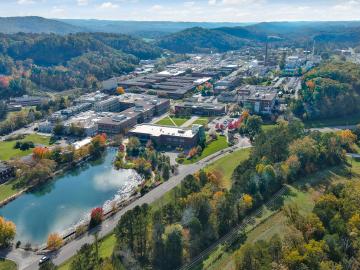
Filter News
Area of Research
- Advanced Manufacturing (1)
- Biology and Environment (15)
- Computational Biology (1)
- Computer Science (1)
- Electricity and Smart Grid (1)
- Energy Science (18)
- Functional Materials for Energy (1)
- Fusion and Fission (4)
- Materials (18)
- Materials for Computing (3)
- National Security (6)
- Neutron Science (3)
- Supercomputing (23)
News Topics
- (-) Frontier (31)
- (-) Grid (29)
- (-) Nanotechnology (11)
- (-) Physics (19)
- (-) Polymers (10)
- (-) Summit (21)
- 3-D Printing/Advanced Manufacturing (42)
- Advanced Reactors (9)
- Artificial Intelligence (59)
- Big Data (37)
- Bioenergy (35)
- Biology (50)
- Biomedical (19)
- Biotechnology (13)
- Buildings (45)
- Chemical Sciences (45)
- Clean Water (11)
- Composites (14)
- Computer Science (66)
- Coronavirus (9)
- Critical Materials (11)
- Cybersecurity (7)
- Education (2)
- Element Discovery (1)
- Emergency (3)
- Energy Storage (40)
- Environment (74)
- Exascale Computing (33)
- Fossil Energy (5)
- Fusion (19)
- High-Performance Computing (61)
- Hydropower (9)
- Irradiation (1)
- Isotopes (21)
- ITER (4)
- Machine Learning (33)
- Materials (61)
- Materials Science (42)
- Mathematics (7)
- Mercury (1)
- Microelectronics (2)
- Microscopy (17)
- Molten Salt (1)
- National Security (51)
- Neutron Science (35)
- Nuclear Energy (25)
- Partnerships (37)
- Quantum Computing (27)
- Quantum Science (31)
- Security (12)
- Simulation (30)
- Space Exploration (7)
- Statistics (3)
- Transportation (25)
Media Contacts

Oak Ridge National Laboratory researchers serendipitously discovered when they automated the beam of an electron microscope to precisely drill holes in the atomically thin lattice of graphene, the drilled holes closed up.

Although blockchain is best known for securing digital currency payments, researchers at the Department of Energy’s Oak Ridge National Laboratory are using it to track a different kind of exchange: It’s the first time blockchain has ever been used to validate communication among devices on the electric grid.

Eight ORNL scientists are among the world’s most highly cited researchers, according to a bibliometric analysis conducted by the scientific publication analytics firm Clarivate.

Oak Ridge National Laboratory scientists designed a recyclable polymer for carbon-fiber composites to enable circular manufacturing of parts that boost energy efficiency in automotive, wind power and aerospace applications.

Nine student physicists and engineers from the #1-ranked Nuclear Engineering and Radiological Sciences Program at the University of Michigan, or UM, attended a scintillation detector workshop at Oak Ridge National Laboratory Oct. 10-13.

As the United States shifts away from fossil-fuel-burning cars and trucks, scientists at the Department of Energy’s Oak Ridge and Argonne national laboratories are exploring options for another form of transportation: trains. The research focuses on zero-carbon hydrogen and other low-carbon fuels as viable alternatives to diesel for the rail industry.

Laboratory Director Thomas Zacharia presented five Director’s Awards during Saturday night's annual Awards Night event hosted by UT-Battelle, which manages ORNL for the Department of Energy.

Several significant science and energy projects led by the ORNL will receive a total of $497 million in funding from the Inflation Reduction Act.

Rama Vasudevan, a research scientist at the Department of Energy’s Oak Ridge National Laboratory, has been elected a Fellow of the American Physical Society, or APS. The honor recognizes members who have made significant contributions to physics and its application to science and technology.

U.S. Secretary of Energy Jennifer Granholm visited Oak Ridge National Laboratory today to attend a groundbreaking ceremony for the U.S. Stable Isotope Production and Research Center. The facility is slated to receive $75 million in funding from the Inflation Reduction Act.


